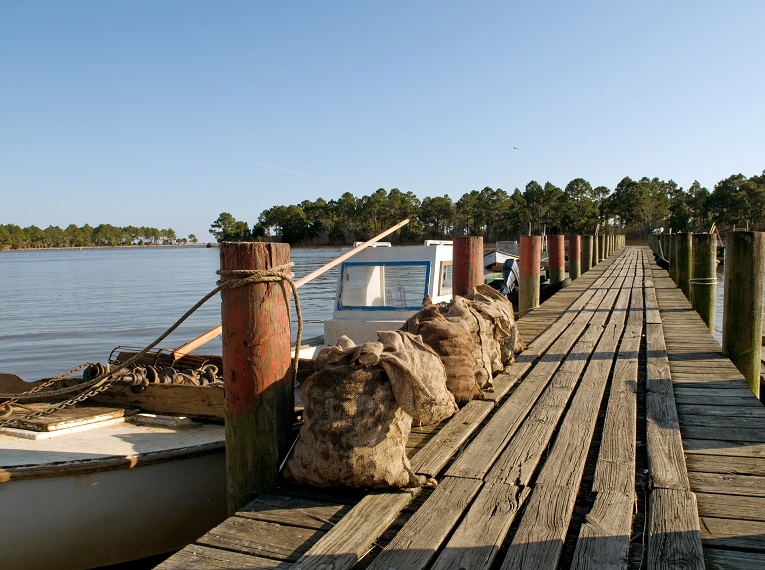In early colonial America, the English common law did not grant waterfront landowners the right to construct a wharf (a pier or dock) on the submerged land next to their property. By the 1640s, however, colonial legislatures and courts began to change that. They recognized that the establishment of this private right, which allowed landowners to connect to navigation, would benefit the growing nation.
The bargain was as follows: By providing the private landowner with an easement over the adjacent submerged land, the government would encourage private investment in the construction of commercial wharves. Private investment in wharves would not only increase the value of the owner’s property, but it would also provide benefits to society in the form of cheaper and more convenient facilities for the movement of goods and services by water.
Most states ultimately incorporated the right to wharf out into their law of riparian rights. The right, along with the investment it encouraged, played an important role in the development of the American economy during the 19th century, a period in which rivers were the lifeblood of the economy. Although oceangoing transport remains common today, railroads and highways greatly reduced the importance of rivers for commerce and transportation.
The right to wharf out, however, is still going strong. Its most common use—which provides little or no public benefit, except perhaps raising the property tax base—is for the construction of docks attached to homes on bays and estuaries. In short, the right to wharf out is largely an archaic property right, one that no longer provides the public benefits it once did.
While we may no longer be concerned with wharf shortages, there are other important services that waterfront landowners can provide. Today’s shortages include things such as wetlands, shellfish, and sand dunes. Coastal wetlands can provide protection from storm surges, wildlife habitat, and nursery grounds for commercial fish species. Shellfish—particularly oysters, which build large reefs—can provide water filtration. Research suggests that while oysters once filtered the entire Chesapeake Bay in less than a week, the current oyster population takes more than 40 weeks to accomplish the same job. Sand dunes along oceanfront beaches can protect homes and other structures from storm damage and provide habitat for many rare and threatened species.
Restoring degraded natural systems such as wetlands, oyster reefs, and dunes is expensive. What if we conceived of new forms of riparian rights that would encourage private investment to provide these services? Because oysters have commercial value, they present one of the most obvious opportunities. Imagine a “right to reef out” that gives waterfront landowners the exclusive right to take oysters from owner-funded restoration projects in adjacent waters. In addition to the possibility of generating revenue (or tasty hors d’oeuvres), the property owner could also gain from the storm-surge protection provided by a strong, healthy reef. While some nonprofit groups are currently leasing state waters for restoration, the incentives for adjacent property owners to invest would be even greater.
Even though the right to wharf out may no longer pay dividends, the legal and political debates over phasing out the right remain divisive. Creating new riparian rights that would provide both private and public benefits should be substantially less controversial. Research in this area is in its early stages, and we should do all we can to encourage new ideas. The time is now to begin thinking about what ought to become the 21st century wharf.




